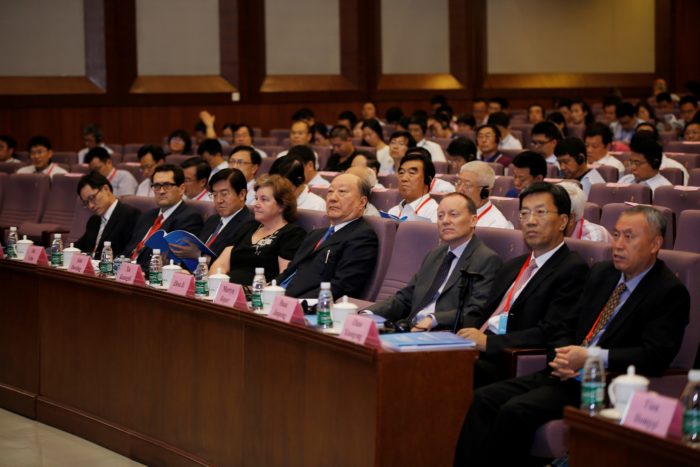13th July 2016 Beijing, China
Business-university collaboration: driving innovation in the UK and China

What are the best models for universities and industry to work together to drive innovation? And how can they work together successfully across borders? These were some of the questions addressed by the China-UK Symposium on Innovation Driven Development with Business-University Collaboration that I and other SIN colleagues attended in Beijing last week. The Symposium was hosted by the Chinese Academy of Engineering and the Royal Academy of Engineering, and the Dowling Review of Business-University Research Collaborations formed an initial basis for discussion. Martyn Roper, the British Embassy’s Charge d’Affaires, gave an introductory speech highlighting the importance of deeper engagement on innovation to drive economic growth in both countries.
 The UK delegation included representatives from BP, Rolls Royce, the University of Nottingham and Innovate UK, while on the Chinese side many of China’s top universities, research institutes and State Owned Enterprises were represented. Speakers talked about success stories – for example, Rolls Royce’s University Technology Centres, of which the first overseas one was in Xi’an, and AVIC (Aviation Industry Corporation of China)’s close cooperation with several UK universities, including Imperial, Manchester, Nottingham and Cranfield, in joint research and the training of its employees.
The UK delegation included representatives from BP, Rolls Royce, the University of Nottingham and Innovate UK, while on the Chinese side many of China’s top universities, research institutes and State Owned Enterprises were represented. Speakers talked about success stories – for example, Rolls Royce’s University Technology Centres, of which the first overseas one was in Xi’an, and AVIC (Aviation Industry Corporation of China)’s close cooperation with several UK universities, including Imperial, Manchester, Nottingham and Cranfield, in joint research and the training of its employees.
 There were some interesting observations on differences between the UK and China; such as, Chinese universities tend to take new technologies to a higher Technology Readiness Level than UK universities do; and that China’s system of central planning leads to clustering, specialisation and rapid scaling of new technologies, while on the other hand the nature of innovation depends on chance and random connections, so is very difficult to centrally plan.
There were some interesting observations on differences between the UK and China; such as, Chinese universities tend to take new technologies to a higher Technology Readiness Level than UK universities do; and that China’s system of central planning leads to clustering, specialisation and rapid scaling of new technologies, while on the other hand the nature of innovation depends on chance and random connections, so is very difficult to centrally plan.
Conclusions were drawn about common success factors for business-university collaborations – clear and shared goals, long term mutual benefit, often shared space, and the exchange of people – and barriers to be tackled, which included concerns about IP protection and criteria for the promotion of academics. And the concluding challenge from Dame Ann Dowling was: how can we extend the best practice to companies and universities that are not already collaborating? Let us know what you think in the comments section.
I am really sorry I missed this Morag. The advantages of Open Innovation are something that I think the UK has huge, world class experience of delivering but it is important that the nature of the collaboration agreements are worked through and properly implemented. Again the UK has (and what I think is still) the world’s first standard for cooperative working and collaboration.